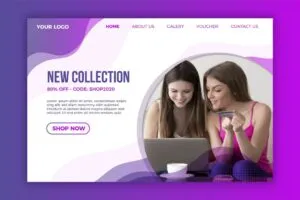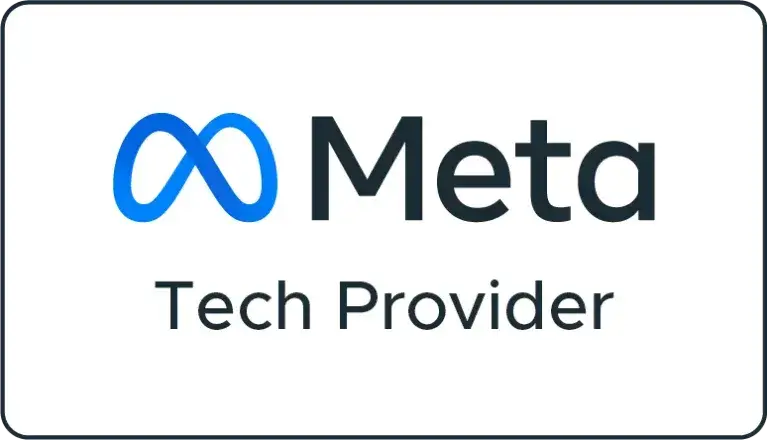Introduction
Optimizing landing pages for conversion is critical for the success of any business with an online presence. From selling a product, promoting a service, or capturing leads, a well-optimized landing page is essential to help you achieve any of these conversions. This complete guide will take you through the art and science of a high-converting landing page.
Why does optimizing landing pages for conversion matter?
First of all, optimizing landing pages for conversion is crucial for customer acquisition, as it’s the first thing your users see after clicking on an ad or search. A well-designed landing page builds brand credibility and trust. Landing pages are conversion-focused, unlike a regular website page, which could include various elements of information about the whole company. Landing pages are designed and built with one goal in mind – to convert customers and gather leads, seamlessly track your conversions as they guide visitors to a landing page where you can route traffic via a professional tracking link. Lastly, you can make updates to your page, prompting and fine-tuning your approach to get even more results.
What will you learn in optimizing landing pages for conversion?
Through this guide, we will cover everything you need to know about optimizing landing pages for conversion. Whether you are a beginner or an experienced marketer, you can download this guide for actionable tricks.
Setting Clear Optimizing Landing Pages for Conversions
-
Define Your Purpose
Before setting up a landing page, the first step that comes is to ask yourself what you want to achieve. The most common goals would include lead generation and collecting email addresses of your users to follow them up, product sales, or event registration for a webinar, workshop, or other such event.
-
Specificity Matters

Be as specific as you could be about your goal. If conversion is your goal, avoid stating how you want to increase conversion as achieving a 10% higher conversion rate in 30 days.
-
Align with Your Business Objectives
Your landing page goal should align with your entire business strategy. For example, if you have recently launched one of your products, that product’s sales will be a factor while creating the landing page. If you are trying to build an email list, your landing page will focus primarily on lead generation.
-
SMART Goals
Always set goals that are Specific to you and your company, Measurable form of some quantity (whether that is the form submission number or sales), achievable for you, your company, and your visitors, Relevant in correlation to your website and visitor actions and Time-bound that makes it easier to track your achievements against the deadlines are as follows:
Keyword Research and Targeting for Optimizing Landing Pages for Conversions
What is Keyword Research?
Keyword research is the foundation of successful SEO and optimizing landing pages for conversions. This is why it is essential:
- Visibility: The right keyword targeting ensures that your landing page appears in search results that are relevant to that page.
- User Intent: Knowing what your target audience is searching for lets you create personalized content that meets users’ requirements.
- Competition: Understanding keywords will help you identify gaps and opportunities in the market.
Keyword Research Guide
- Brainstorm Topics
Choose the topics that matter to your business, product, or service for properly optimizing landing pages for conversion. Then, consider the pains, benefits, and solutions for each. In addition, keyword research tools such as Google Keyword Planner, SEMrush, and Ahrefs should be used. Also, focus on long-tail keywords as they have less competition and more specific, relevant traffic for optimizing landing pages for conversion.
- Analyze Competitor Keywords
Learning about which keywords your competitors go after is an essential part of the optimization process. That way, you can find gaps in the competition and areas where you can outperform your competitors.
Moreover, consider user intent by identifying the use case of every keyword:
-
- Informational: The user is doing research, i.e., “Optimizing Landing page for Conversions,” “HubSpot Blog,” and “Landing Page Stats.”
- Presentational: The user needs to find a specific website, “Document Scanners 2021.”
- Purchasable: The user wants to make a decision or buy something today. “Email Landing Page Expert” Allah Arokhamjni
- Apply Keywords to Your Landing Page
Similar to optimizing landing pages for conversion, you must incorporate your target keyword into the landing page using the following tags: Page title. Hashing into the titles is good practice for landing pages because it signals intent to visitors and your CMS. Page title, Meta description, FromBody.URL and image alt text all contribute to optimizing landing pages for conversion.
Design and Layout Optimization
- Visual Hierarchy
- Clear Headlines – Your headline should immediately inform the visitor of the purpose of the landing page. Use a font size and style that makes it stand out.
- Subheadings – Divide content into easily digestible pieces with descriptive subheadings.
- CTA – A prominent CTA button is a must. Use contrasting colors to make it pop.
- Consistent Branding
- Colors and Fonts – Use your brand’s color palette and fonts. Consistency breeds trust.
- Logo Placement – Your logo must be visibly placed, usually on the top left or at the center.
- Above the Fold Content
- First Impression – Your most critical information, headline, and CTA should be visible without scrolling down.
- Hero Images Or Videos – Use a compelling image or video that evokes the message you want to send.
- White Space
- Breathing Room – Do not overcrowd your page. White space, also known as negative space, makes it more readable.
- Margins and Padding – Make sure there’s spacing around everything.
- Visual Elements
- Images and Videos – Use high-quality pictures and videos that resonate with your target demographic.
- Icons and Illustrations – Visuals serve as faster aids to understanding.
- Testimonials – Embed testimonies with images or videos.
- Mobile Responsiveness
- Responsive Design – Your landing page must look good on all devices.
- Test Across Devices – Use instrumentality that enables you to peer your page across screens.
- A/B Testing
- Iterate and Improve – Test different layouts, colors, and elements. Run A/B tests to determine the best structure for your target demographic for optimizing landing pages for conversion.
Mobile Responsiveness
- The Mobile-first approach
- Why it matters: Most people browsing the internet do so using mobile devices. Therefore, a responsive layout is a necessity for your landing page.
- Implementation: Use responsive design to adjust your page layout such that it fits perfectly in different screen sizes.
-
- Testing it across all devices
-
-
- Use an online tool to see how it will appear on a desktop, tablet, or smartphone.
- Implement user options for buttons, forms, and images to be clickable and visible, even if the user is using a narrow screen.
-
-
- Load time
-
-
- This is slower than on your PC, and most errors are displayed.
- Imager optimization, whereby an image is compressed into files but high quality is maintained.
- Minimize, where your CSS and JavaScript files are minimized.
-
- Touch-friendly
- The finger is wide, and your buttons must correspond to the size.
- Spacing: space them to avoid accidental clicks and make sure they don’t overlap.
- Simple navigation
- A hamburger menu or dropdown here is an option.
- Single column: Maximize your message, and content features are offered within a single-column view.
An example provided by mobile optimization tips:
- CTA: Your main CTA should be at the top of the page before scrolling.
- Mobile text: Text should be large enough to be read on a cell phone, roughly 16px.
- Images: These need to be scaled down for mobile.
Loading Speed and Performance

- The Need For Speed
- Bounce Rates: Nobody likes slow websites. They will leave before your website has a chance. Page load speed plays an important role in bouncing rates. People do not wait.
- Mobile users: Load speed is a major issue with cell phones.
- Image Optimization
-
- Compression: There are online compressors that reduce the weight of the image, leaving it almost the same.
- Formats: JPEG for a photograph and PNG for graphic images are best.
- Minification
-
- CSS and JS: This is when you delete all unnecessary characters from the script. This will help to reduce the weight of the file. Minimize CSS and JS files. This means removing all unnecessary characters.
- HTML: This should also be minimized. It won’t have very high weight, but every bit counts.
- Browser Caching
-
- Caching stores the site’s information on the user’s browser so that it does not load the page completely again next time. Moreover, it saves the style of the site so that the next time any visitor loads the site, seeing broken pages isn’t necessary. For returning visitors, caching can save significant time.
- Content Delivery Networks
-
- Benefits and Implementation
- CDN: What are CDNs? It’s a network of geographically dispersed servers. They deliver static files like JavaScript and video files faster. All in diversion, the user’s data is sent from the closest server, due to which the load on the main server reduces; as a result, it works fast. Google has CDNs for storage as well.
- Benefits and Implementation
- Performance Measurement Tools
- For instance, use Google’s Page Speed Insight.
Conclusion
You now possess the knowledge to create optimized landing pages for conversion. Here is a recap of what we covered in this article:
- Landing Pages Understanding: We discussed the importance of optimizing landing pages for conversion and their significance in the customer purchasing cycle.
- Goals Setting: No matter what kind of landing page you are creating, make sure to set clear goals. It should be either lead generation, product sales, or event registrations.
- Keywords Research and Targeting: Dive into using relevant keywords that help attract your perfect client. Research and discover what Google means.
- Design and Layout: Visual hierarchy, branding elements, and content above the fold of a landing page should be convincing.
- Content: Write a compelling answer to address their pain points and the main reasons and benefits of the product. Do not forget about writing friendly.
- Mobile: Analyze how well your landing pages view on mobile. The majority of people use them on their mobile.
- Page speed and performance: One second makes a massive difference. The fewer seconds your page loads, the more chances you have to convert.














